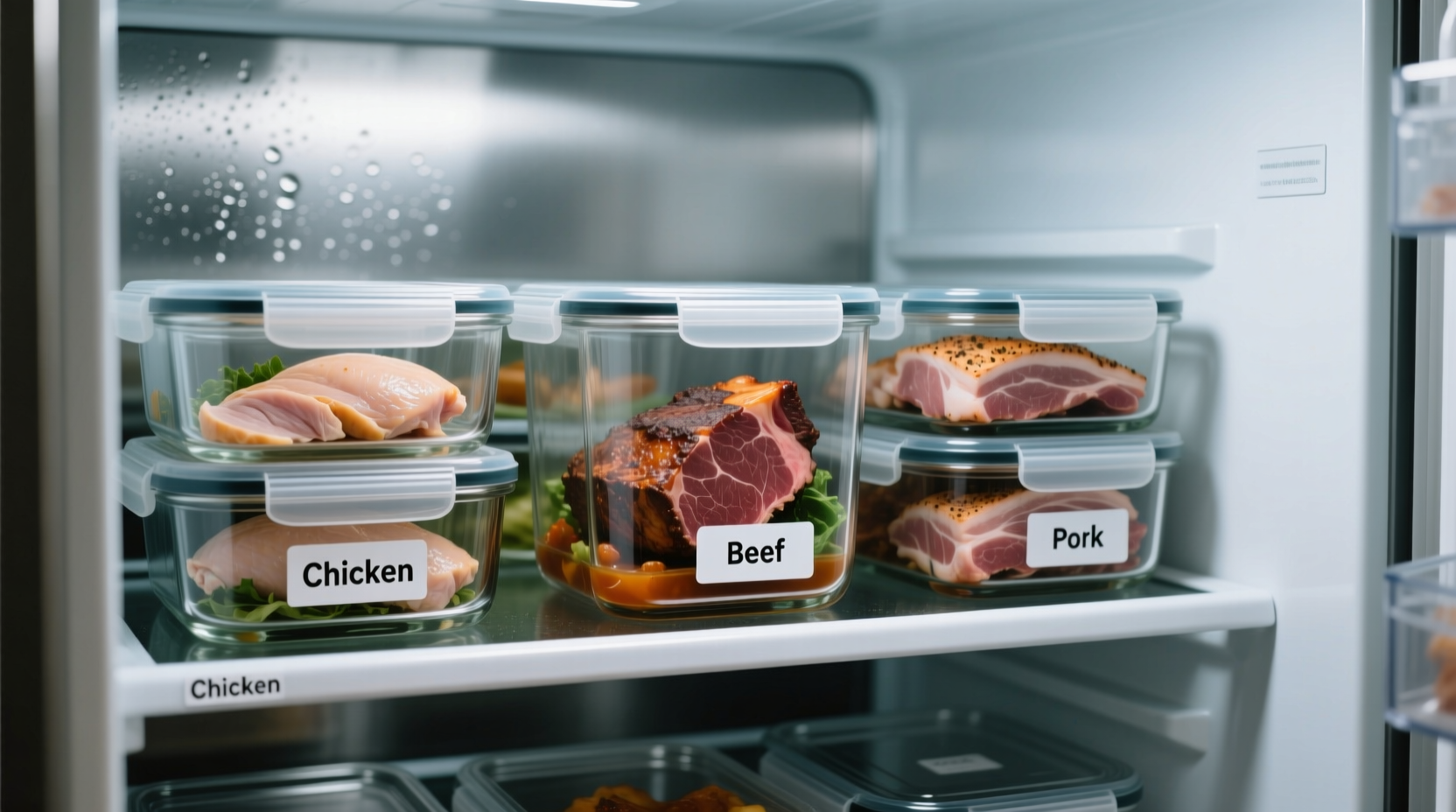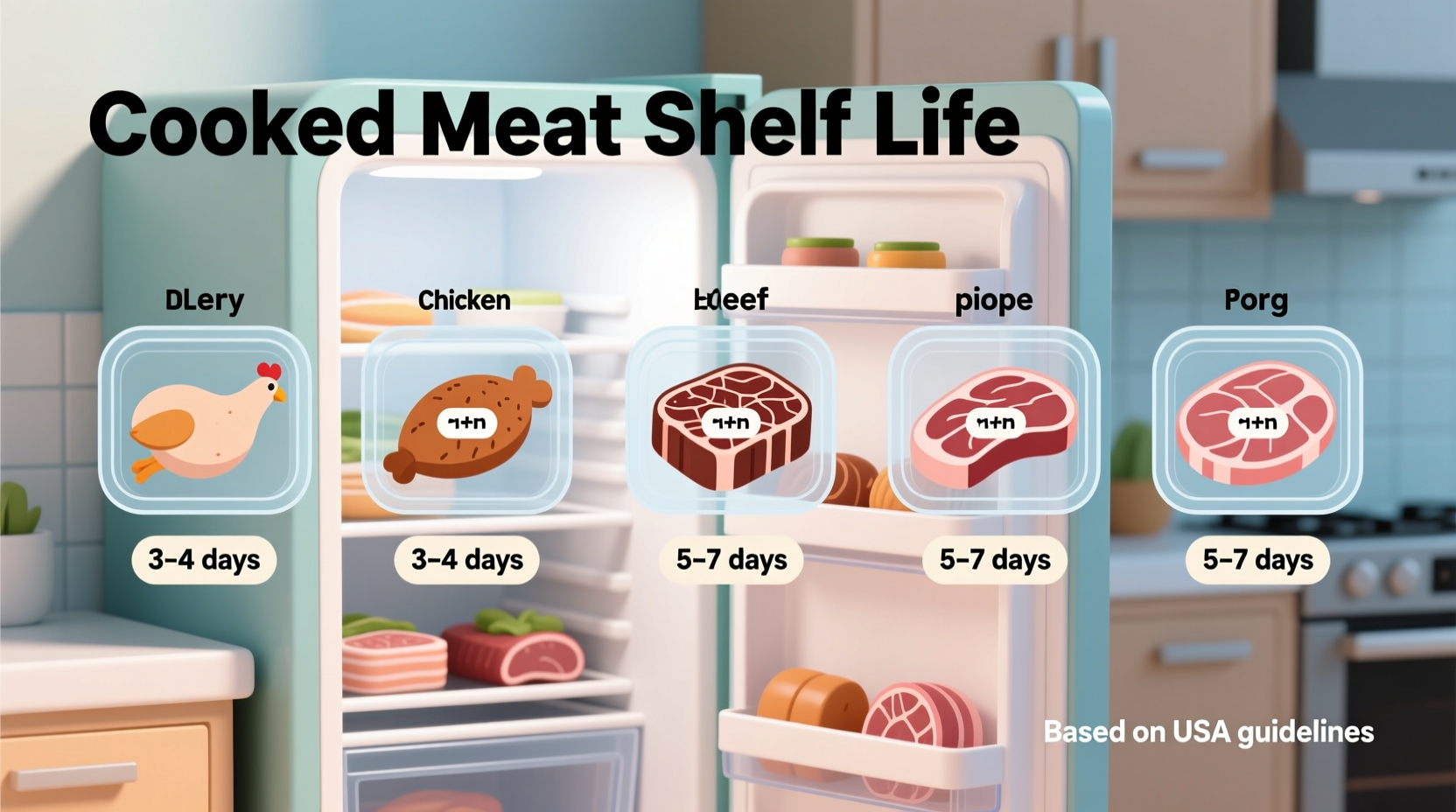Ever opened your refrigerator wondering if those leftovers are still safe to eat? You're not alone. Each year, millions of Americans face foodborne illnesses from improperly stored cooked meats. Understanding exactly how long does cooked meat last in the refrigerator isn't just about avoiding waste—it's crucial for protecting your health and your family's wellbeing.
Why This Timeline Matters for Your Health
Food safety isn't just about convenience; it directly impacts your health. Bacteria like Salmonella, Listeria, and Staphylococcus aureus can multiply rapidly in the "danger zone" between 40°F and 140°F. While proper cooking kills most bacteria, leftovers become vulnerable again as they cool and sit in the fridge. The USDA's 3-4 day guideline represents the window when bacterial growth typically remains below dangerous levels in properly stored cooked meats.
How Different Cooked Meats Stack Up
Not all cooked meats share identical shelf lives. While the general rule applies broadly, specific factors affect each type:
| Cooked Meat Type | Refrigerator Shelf Life | Special Considerations |
|---|---|---|
| Cooked chicken or turkey | 3-4 days | White meat typically lasts slightly longer than dark meat |
| Cooked beef (roasts, steaks) | 3-4 days | Fatty cuts may spoil slightly faster than lean cuts |
| Cooked pork | 3-4 days | Ham lasts up to 7 days due to curing process |
| Cooked fish | 3-4 days | Fatty fish like salmon spoil faster than lean fish |
| Casseroles with meat | 3-4 days | Egg-based casseroles have shorter shelf life |
Critical Factors That Change the Clock
The 3-4 day rule assumes perfect conditions. Real-world variables can shorten or extend this timeline:
Temperature Control Is Non-Negotiable
Your refrigerator must maintain 40°F (4°C) or below—use an appliance thermometer to verify. Every 5°F increase above this threshold doubles bacterial growth rates. During power outages or frequent door openings, the clock starts ticking faster.
Storage Method Determines Safety Margin
How you store leftovers directly impacts their longevity:
- Air-tight containers prevent moisture loss and cross-contamination
- Shallow containers (2 inches deep or less) cool faster than deep dishes
- Aluminum foil alone provides inadequate protection—always use rigid containers
- Don't overfill your refrigerator—proper air circulation maintains consistent temperature
The Two-Hour Rule: Your First Critical Deadline
From the moment food comes off the heat, you have only two hours to get it into the refrigerator (one hour if kitchen temperature exceeds 90°F). This critical window comes from USDA Food Safety and Inspection Service guidelines [source]. Bacteria multiply exponentially during this initial cooling phase.

When in Doubt: The Spoilage Detection Protocol
Don't rely solely on the calendar. Use this systematic approach to assess cooked meat safety:
- Smell test: Trust your nose—sour, ammonia-like, or sulfuric odors indicate spoilage
- Texture check: Slimy film or sticky surface means bacteria have taken hold
- Visual inspection: Discoloration (especially gray or green hues) signals deterioration
- Mold check: Any visible mold means discard the entire portion (mold roots penetrate deeper than visible)
Remember: Pathogenic bacteria that cause foodborne illness often don't produce noticeable odors or visible changes. When storage time exceeds guidelines, err on the side of caution.
Maximizing Your Leftover Lifespan
Follow these professional storage techniques to get the full 3-4 days from your cooked meats:
- Cool rapidly: Divide large portions into smaller containers before refrigerating
- Label everything: Include both contents and date using masking tape on containers
- Store strategically: Place leftovers on middle shelves where temperature is most consistent
- Reheat properly: Bring leftovers to 165°F internally when reheating
Freezing: Your Extended Storage Solution
Can't finish within 3-4 days? Freezing extends safety dramatically:
- Cooked poultry: 4 months
- Cooked beef/pork: 2-3 months
- Casseroles: 3 months
- Gravy or meat stock: 2-3 months
For best results, use vacuum-sealed bags or rigid freezer containers with minimal air space. Thaw frozen leftovers in the refrigerator, not on the counter.
Avoid These Common Leftover Mistakes
Even careful cooks make these critical errors:
- Mistake: Storing hot food directly in the fridge
Solution: Cool to room temperature first (within the 2-hour window) - Mistake: Using takeout containers for long-term storage
Solution: Transfer to proper food storage containers - Mistake: Tasting questionable leftovers to "check" safety
Solution: If in doubt, throw it out—tasting can make you sick - Mistake: Ignoring refrigerator temperature fluctuations
Solution: Use a standalone thermometer for accurate readings
Special Considerations for High-Risk Groups
Pregnant women, young children, older adults, and immunocompromised individuals should follow stricter guidelines. For these vulnerable populations, consume cooked meats within 2-3 days or freeze immediately. The CDC emphasizes [source] that foodborne illnesses can have more severe consequences for these groups.
When Leftovers Become Waste: The Environmental Impact
Food waste contributes significantly to environmental problems. According to the USDA, Americans waste approximately 30-40% of the food supply. By understanding how long cooked meat lasts in refrigerator conditions, you can reduce waste while staying safe. Plan meals strategically to use leftovers within the safe window, or freeze portions immediately after cooking for future meals.











 浙公网安备
33010002000092号
浙公网安备
33010002000092号 浙B2-20120091-4
浙B2-20120091-4